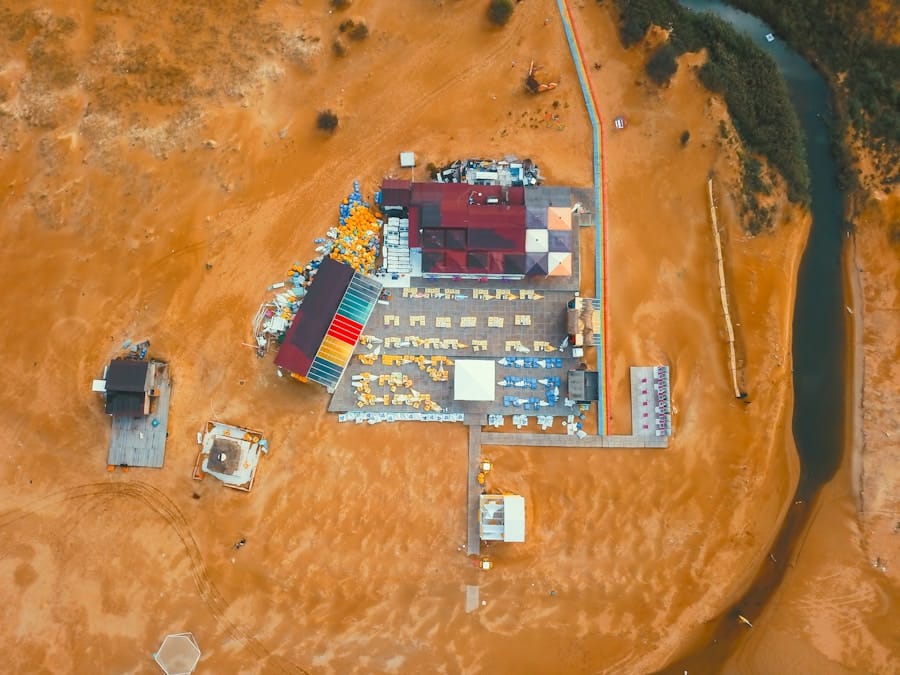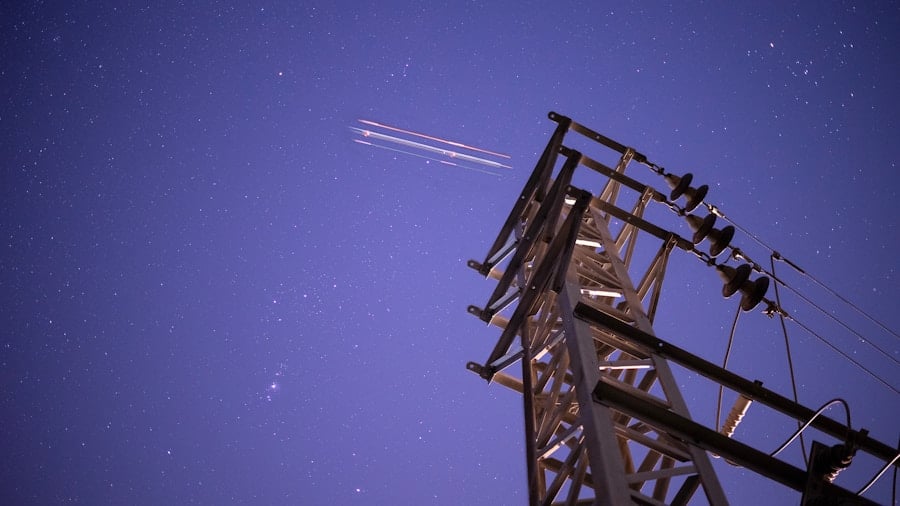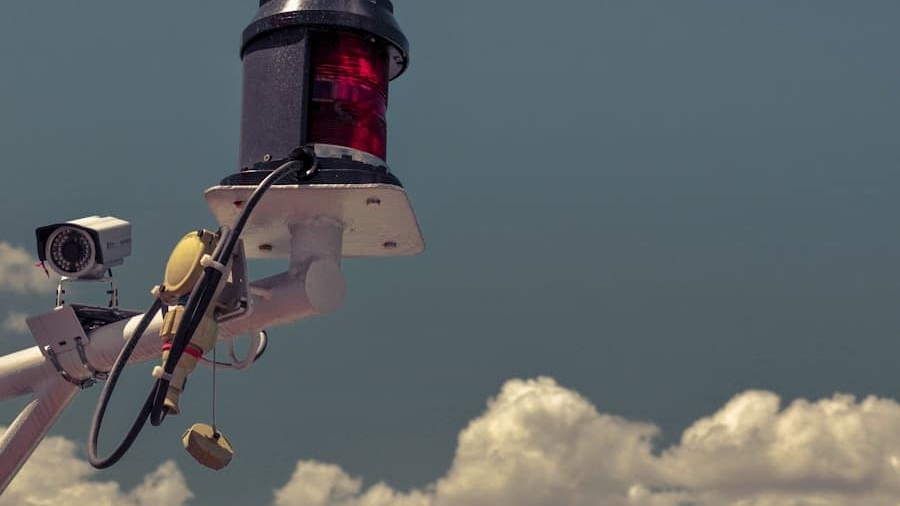The advent of artificial intelligence (AI) has revolutionized numerous fields, and space exploration is no exception. AI-powered satellite swarms represent a significant leap forward in how we gather and analyze data from our planet and beyond. These swarms consist of multiple satellites working in concert, leveraging AI algorithms to enhance their operational efficiency and data collection capabilities.
Unlike traditional satellite systems, which often operate in isolation, satellite swarms can communicate and collaborate, allowing for a more comprehensive understanding of complex phenomena. This innovative approach not only increases the volume of data collected but also improves the quality and relevance of that data. The integration of AI into satellite swarms enables real-time decision-making and adaptive responses to changing conditions in space and on Earth.
For instance, a swarm of satellites can dynamically adjust their orbits based on environmental factors or mission requirements, optimizing their coverage and data acquisition. This flexibility is crucial for applications ranging from climate monitoring to disaster response. As we delve deeper into the mechanics and implications of AI-powered satellite swarms, it becomes evident that they are poised to transform our approach to data collection and analysis in ways previously thought impossible.
Key Takeaways
- AI-powered satellite swarms are revolutionizing data collection in various industries by leveraging the capabilities of artificial intelligence and satellite technology.
- Artificial intelligence plays a crucial role in optimizing the coordination and communication among satellite swarms, enabling efficient data collection and analysis.
- Using satellite swarms for data collection offers advantages such as global coverage, real-time monitoring, and cost-effectiveness compared to traditional methods.
- AI improves data collection capabilities of satellite swarms by enabling autonomous decision-making, adaptive task allocation, and predictive analytics.
- AI-powered satellite swarms have diverse applications in industries such as agriculture, environmental monitoring, disaster management, and telecommunications, offering unprecedented insights and solutions.
The Role of Artificial Intelligence in Satellite Swarms
Artificial intelligence plays a pivotal role in the operation of satellite swarms, primarily through its ability to process vast amounts of data and make autonomous decisions. Machine learning algorithms enable satellites to learn from their environment, improving their performance over time. For example, AI can analyze historical weather patterns to predict optimal times for data collection, ensuring that the satellites gather the most relevant information.
This predictive capability is particularly beneficial for applications such as agricultural monitoring, where timely data can significantly impact crop yields. Moreover, AI facilitates communication among satellites within a swarm. By employing advanced algorithms, satellites can share information about their surroundings, coordinate their movements, and even redistribute tasks based on real-time assessments.
This collaborative approach enhances the overall efficiency of the swarm, allowing it to cover larger areas and collect more diverse datasets than individual satellites could achieve alone. The synergy created by AI-driven communication not only maximizes resource utilization but also minimizes the risk of collisions and operational failures.
Advantages of Using Satellite Swarms for Data Collection

The deployment of satellite swarms offers several advantages over traditional single-satellite systems. One of the most significant benefits is redundancy; if one satellite in a swarm fails, others can take over its responsibilities without compromising the mission’s objectives. This resilience is crucial for long-term projects, such as climate monitoring or disaster management, where continuous data collection is essential.
The ability to maintain operational integrity despite individual satellite failures ensures that critical information remains accessible. Additionally, satellite swarms can achieve higher temporal and spatial resolution in data collection. By working together, these satellites can cover vast areas more quickly than a single satellite could manage alone.
For instance, a swarm can be deployed to monitor deforestation in real-time, providing timely insights that can inform conservation efforts. The increased frequency of data collection allows for more dynamic monitoring of environmental changes, enabling stakeholders to respond swiftly to emerging issues.
How AI Improves Data Collection Capabilities of Satellite Swarms
AI enhances the data collection capabilities of satellite swarms through advanced analytics and machine learning techniques. By employing algorithms that can identify patterns and anomalies in large datasets, AI enables satellites to focus on areas of interest or concern. For example, in monitoring urban development, AI can analyze satellite imagery to detect changes in land use or infrastructure growth, allowing urban planners to make informed decisions based on real-time data.
Furthermore, AI algorithms can optimize sensor usage within the swarm. Each satellite may be equipped with different types of sensors tailored for specific tasks—such as optical imaging, radar, or infrared sensing. AI can determine which sensors should be activated based on the current mission objectives and environmental conditions, ensuring that the most relevant data is collected while conserving energy and extending the operational lifespan of the satellites.
This intelligent resource management is vital for maximizing the effectiveness of satellite swarms in various applications.
Applications of AI-Powered Satellite Swarms in Various Industries
The applications of AI-powered satellite swarms span a wide range of industries, each benefiting from enhanced data collection and analysis capabilities.
By analyzing vegetation indices derived from satellite data, farmers can identify areas requiring irrigation or pest control, ultimately leading to more efficient resource use and improved yields.
In the realm of environmental monitoring, satellite swarms play a crucial role in tracking climate change indicators such as greenhouse gas emissions and deforestation rates. By providing near-real-time data on these critical issues, stakeholders can implement timely interventions to mitigate adverse effects on ecosystems and communities. Additionally, disaster response agencies leverage satellite swarms to assess damage after natural disasters like hurricanes or earthquakes.
The ability to quickly gather comprehensive data allows for more effective emergency response strategies and resource allocation.
Challenges and Limitations of AI-Powered Satellite Swarms

Despite their numerous advantages, AI-powered satellite swarms face several challenges and limitations that must be addressed for their full potential to be realized. One significant concern is the complexity of coordinating multiple satellites in a swarm. As the number of satellites increases, so does the difficulty in managing their interactions and ensuring effective communication.
This complexity can lead to potential operational inefficiencies or even collisions if not properly managed. Another challenge lies in the reliance on robust AI algorithms that require extensive training data to function effectively. In many cases, obtaining high-quality training datasets can be difficult due to limitations in existing data or privacy concerns.
Furthermore, the dynamic nature of space environments introduces uncertainties that can affect the performance of AI systems. For instance, unexpected space weather events or orbital debris could disrupt communication between satellites or impair their sensors, necessitating ongoing research and development to enhance resilience.
Future Developments and Potential of AI-Powered Satellite Swarms
Looking ahead, the future developments in AI-powered satellite swarms hold immense promise for advancing our capabilities in data collection and analysis. As technology continues to evolve, we can expect improvements in miniaturization and cost-effectiveness of satellite components, making it feasible to deploy larger swarms with enhanced capabilities. Innovations in propulsion systems may also allow for more agile maneuvering in space, enabling satellites to adapt quickly to changing mission requirements.
Moreover, advancements in AI algorithms will likely lead to even greater autonomy for satellite swarms. Future systems may be capable of self-learning from their experiences in real-time, continuously refining their operational strategies without human intervention. This level of autonomy could revolutionize applications such as environmental monitoring or disaster response by enabling rapid adaptation to unforeseen circumstances.
The Impact of AI-Powered Satellite Swarms on Data Collection
The integration of artificial intelligence into satellite swarms marks a transformative shift in how we approach data collection across various domains. By harnessing the power of collaborative satellites equipped with advanced AI algorithms, we are poised to unlock new insights into our planet’s dynamics and beyond. The advantages offered by these systems—such as redundancy, enhanced resolution, and intelligent resource management—position them as invaluable tools for addressing some of the most pressing challenges facing humanity today.
As we continue to explore the potential applications and refine the technologies behind AI-powered satellite swarms, it is clear that they will play an increasingly vital role in shaping our understanding of complex systems on Earth and throughout the cosmos. The journey ahead promises exciting developments that will further enhance our ability to collect and analyze data in ways that were once unimaginable.
In a related article, How Smartwatches Are Enhancing Connectivity, the focus is on the ways in which wearable technology is revolutionizing the way we stay connected. Just as AI-powered satellite swarms are improving data collection capabilities, smartwatches are enhancing connectivity by allowing users to access information and communicate more easily on the go. These advancements in technology are shaping the future of how we interact with the world around us.
FAQs
What are AI-powered satellite swarms?
AI-powered satellite swarms are a group of small satellites equipped with artificial intelligence (AI) capabilities that work together to collect and process data from space.
How do AI-powered satellite swarms improve data collection capabilities?
AI-powered satellite swarms can cover larger areas and collect more data in a shorter amount of time compared to traditional single satellites. The AI capabilities also enable the satellites to autonomously analyze and process the collected data, providing more accurate and timely information.
What are the applications of AI-powered satellite swarms?
AI-powered satellite swarms have various applications, including environmental monitoring, disaster response, agriculture, urban planning, and infrastructure development. They can also be used for military and defense purposes, as well as for scientific research and exploration.
How do AI-powered satellite swarms benefit different industries?
AI-powered satellite swarms provide valuable data for industries such as agriculture, where they can help optimize crop management and yield predictions. In urban planning, they can assist in monitoring infrastructure and land use. Additionally, they can aid in disaster response by providing real-time information for emergency management.
What are the challenges associated with AI-powered satellite swarms?
Challenges associated with AI-powered satellite swarms include managing the large volume of data collected, ensuring the security and privacy of the data, and addressing regulatory and ethical considerations related to the use of AI in space. Additionally, the cost of developing and launching satellite swarms can be a barrier for some organizations.

